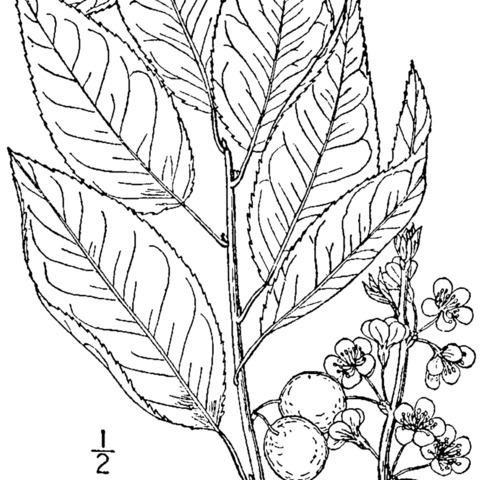Straggling, often thorny, colonial shrub or low tree to 4 m; lvs scarcely out of the bud at anthesis, at maturity lanceolate to oblong, 5–8 cm, gradually acute or acuminate above, acute to obtuse at base, glabrescent, sharply serrate, the teeth triangular, acuminate, 0.5–1 mm on the distal side, pedicels 5–10 mm, glabrous; hypanthium minutely puberulent or nearly glabrous; sep oblong-ovate, 2 mm, pubescent on both sides but the back often only inconspicuously so; pet white, 6–8 mm; fr dark purple, subglobose, 12 mm thick; stone turgid. Dry, rocky woods, sometimes on shale-barrens; Pa. and w. Md. to W.Va., with outlying stations to Conn., w. Va., and e. Tenn. Rare. Apr., May; before the lvs.
More
A shrub or small tree. It often forms thickets. It has many upright branches. It grows 6 m high. The trunk is 15 cm across. The leaves are 5-9 cm long by 2-3 cm wide. They are narrow oval or sword shaped. There are 2 dot like glands at the base. There are fine sharp teeth along the edge. The leaves are covered with soft hairs when young. They are dark green above and paler underneath. The flowers are 12 mm wide with 5 rounded petals. They are white but turn pink. The flowers occur as 2-4 together on slender stalks. The fruit is a plum 10-12 mm across. It is reddish purple with a whitish bloom. They have a sour yellow pulp. There is a large stone.

